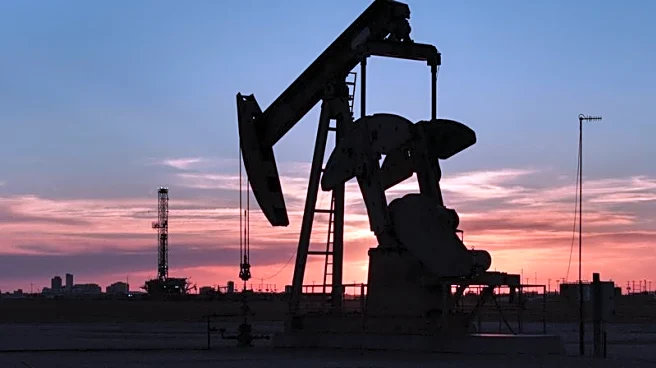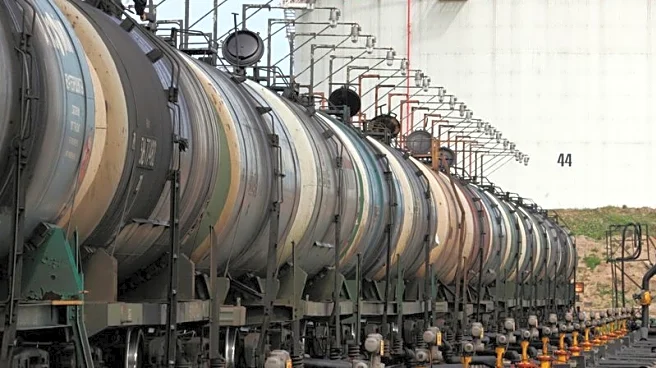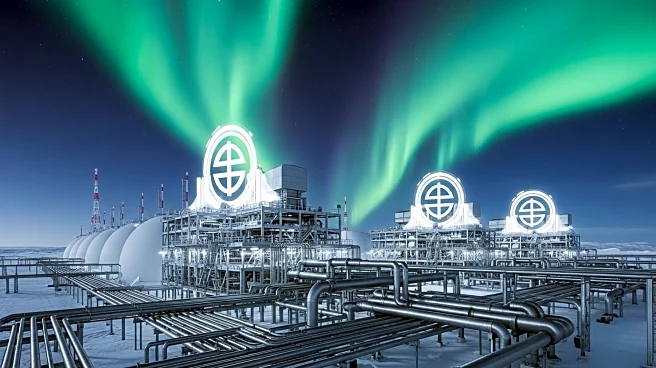What's Happening?
The Organization of the Petroleum Exporting Countries (OPEC) and its allies, including Russia, have decided to increase oil production by 137,000 barrels per day starting in November. This decision mirrors the production increase for October and comes amid ongoing concerns about a potential supply glut. The announcement led to a 1% rise in oil prices, with Brent crude futures reaching $65.47 per barrel and U.S. West Texas Intermediate crude settling at $61.69. Analysts had anticipated a larger production increase, but the modest hike reflects the current oversupply in the market. The decision also coincides with rising Venezuelan exports and the resumption of Kurdish oil flows, contributing to the complex supply dynamics.
Why It's Important?
The modest production increase by OPEC+ is significant as it addresses the delicate balance between supply and demand in the global oil market. The decision is likely to impact oil prices, which are sensitive to changes in production levels. The increase is seen as manageable due to ongoing supply disruptions caused by sanctions on Russia and Iran, as well as geopolitical tensions affecting Russian energy facilities. The decision also highlights the differing priorities within OPEC+, with Russia advocating for a smaller increase to avoid price pressure, while Saudi Arabia favored a more substantial hike to regain market share. The outcome of this decision will influence global energy markets and could affect economic conditions in oil-dependent regions.
What's Next?
Looking ahead, the oil market will be closely monitoring the impact of OPEC+'s production decision on global supply and prices. Analysts expect that the upcoming refinery maintenance season in the Middle East may help stabilize prices. Additionally, geopolitical risks and inefficient trade routes continue to pose challenges. The market will also watch for any changes in demand fundamentals, particularly in light of potential economic slowdowns. The ongoing stockpiling of oil by China and the geopolitical landscape will further influence market dynamics. Stakeholders will need to navigate these complexities as they assess future production strategies.












